
A special exhibition "One thousand technology exchanges that changed Japan" is being held at the National Science Museum from Tuesday, October 30, 2018 to March 3, 2019 (Sunday). Since I participated in the media exhibition for media, I will tell you the state of the exhibition!
Television, refrigerator, personal computer, car … Now it's a civilization's instruments that have become "obvious". However, before that there was a tireless effort of the predecessors, and a trajectory of trial and error. In this special exhibition "One thousand technology changes that changed Japan" science and technology heritage showing the footprints of development from the end of the Edo period to the Taisho, Showa, Heisei from the encounter with Western technology in the early Meiji era gathered on an unprecedented scale To do!
This year will be 150 years ago starting from the first Meiji period. How did Japan get up to the top of the world in the field of science and technology, which began to move toward modernization after the Meiji Restoration? This exhibition introduces its magnificent history.
The total number of exhibits is more than 600 points!

Especially the exhibition scene of the first chapter with many exhibits. Narrow and precious technical heritage are lining up

The textile industry was an important industry that supported Meiji's fostering industry. This is a big hit movie "Your Name" also appeared in "Braid" Used in Daimaru
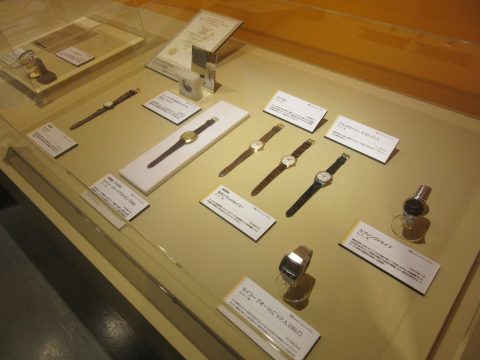
Here, valuable watches, such as the world's first quartz watch, line up. It was after modern times that an accurate watch became an essential item. Until then it was said that the Japanese were loose on time
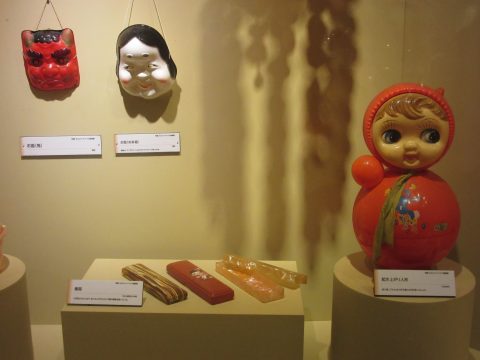
A nostalgic for older people, celluloid toys. It was robbed by plastics, but in recent years it has gained attention again from the viewpoint of environmental protection
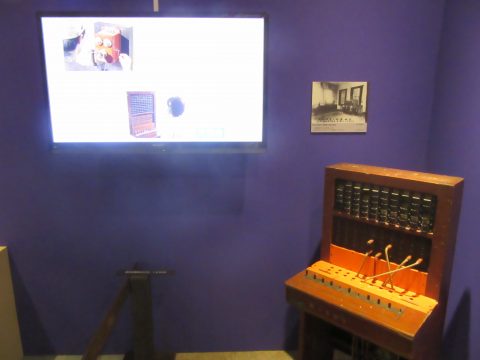
Exhibition explanation of exchanges that appeared with the spread of the telephone
The total number of exhibits gathered at "Kajaku" exhibition hall is over 600 points. Both are valuable industrial heritage showing the development of Japanese science and technology, and it is better to expect a couple of hours to see it all over.
In particular , about 50 materials certified as important cultural properties, science heritage, information processing technology heritage, foundation of lightning, future technology heritage are particularly noticeable!
Demonstration of physical force
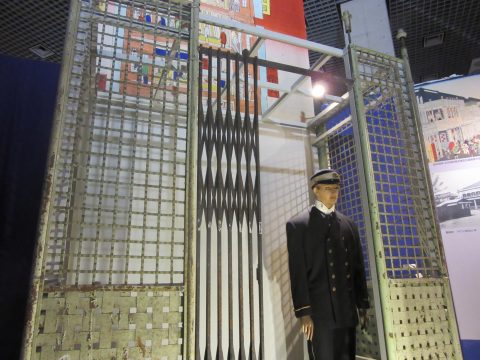
The innovative exhibition of the oldest elevator installed third in the country. Activate with rope control method that starts and stops by pulling a rope in a basket

In the early days, the car was powered by steam or electricity. The front is Milburn's electric car. It is interesting that it is becoming the era of electric cars once around a lap
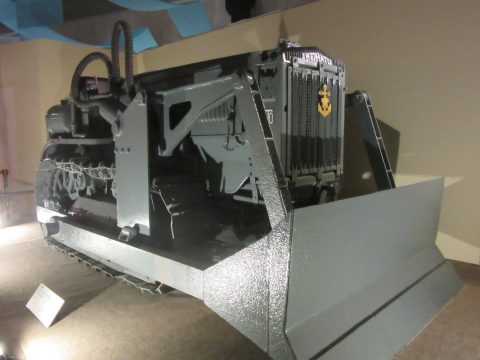
Domestically produced bulldozer No. 1, Komatsu bulldozer G 40. While in the war, it started in the Philippines, was raised at a later date thrown into the sea, was used on the farm in Australia
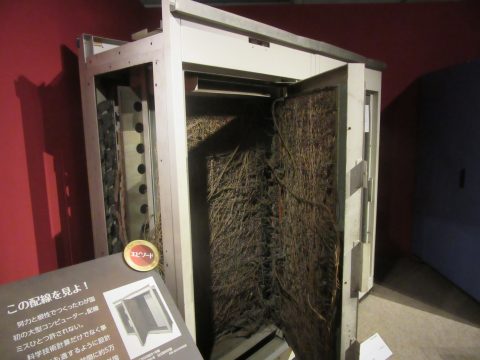
Japan's first large computer. It was introduced in many organizations such as the University of Tokyo and has the ability to perform 50,000 additions / subtractions per second, but of course it is not comparable with modern PCs. All internal wiring is hand operated
Some existing science and technology heritage can not be carried easily, but only Kaaku is able to appreciate the huge actual thing itself. It is an exhibition of "unprecedented scale".
Computers and others that have evolved "smarter and more compact", the size of the machine at that time is all about the story. Although it is made to be stunned by the precision of wiring by hand, at the same time, you can feel the tremendous passion for technology itself.
Introducing the research and development topics of science and technology in an easy-to-understand manner
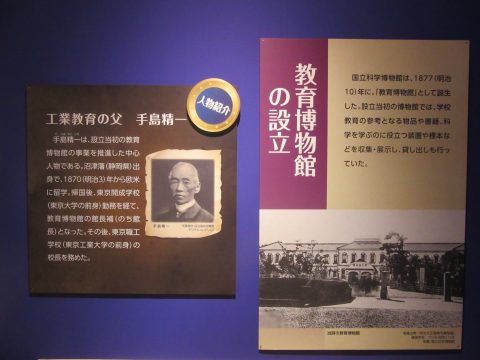
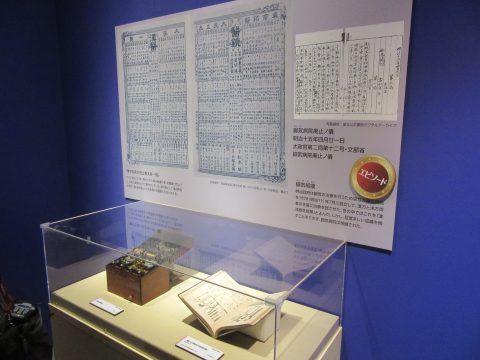
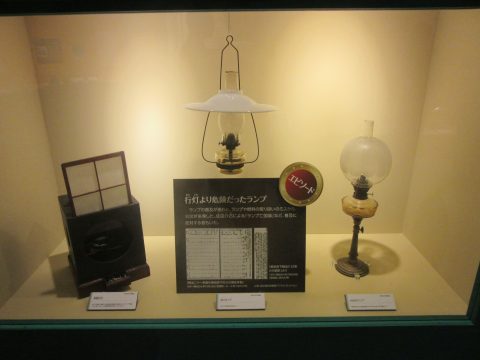
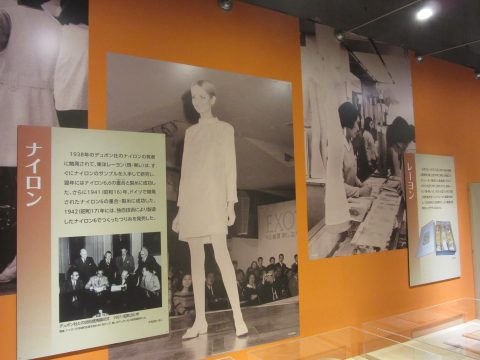
This exhibition consists of all eight chapters. Combining abundant reference materials and topics, the scientist himself and the inventions and discoveries that scientists and technicians left behind are explained in detail. I introduce plenty of "a thousand techniques that changed Japan".
Why not try walking slowly so that you will experience the history of Japan since the Meiji period with a feeling of time slipping?
Special release of Meiji Emperor and Thomas · Edison Yukari items
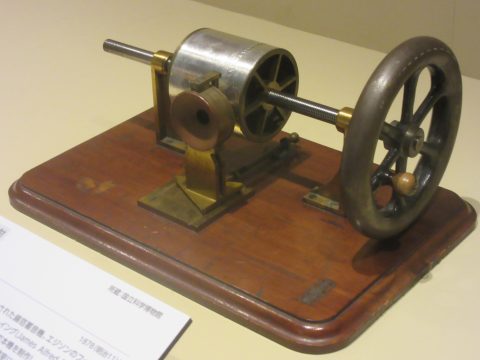
Japan's first sound recording machine, "Su Suki" (important cultural property).
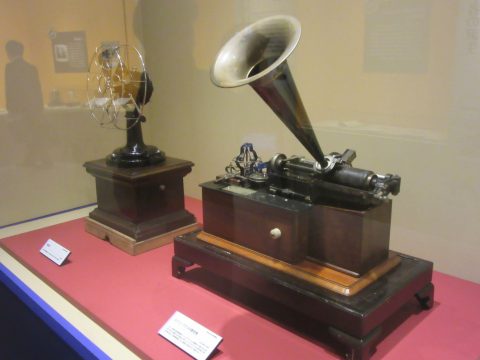
Wax garnophonograph gift which Edison gave to Emperor Meiji
It is also one of the highlight of this exhibition that materials related to Edison and Meiji Emperor are released as special open goods. Su – telling machine was "Japan 's first sound recording machine" which was produced by Englishman Ewing who heard the invention of Edison' s phonograph and was brought to Japan. At the same time, very valuable wax gramophone gift that Edison dedicated to Emperor Meiji through the American envoy is released.
Originally, the science museum in Ueno was called Tokyo Museum in Yushima, but it seems that it opened a new place in the ground of Ueno triggered by the damage of the Kanto earthquake. In commemoration of it, it is these items that were given by the Imperial Household Agency.

Mr. Masahiro Majima performing an exhibition commentary
"Although this exhibition introduces various technologies, I think that there are people now that there are people's efforts for the past 150 years"
Mr. Masahiro Majima of the National Science Museum who served as general supervision of this exhibition says like that.
"There are various problems such as environmental problems in the present age, but the problem that seems to be impossible to solve at first sight will also change with the discovery of something new, Also, that "people" will produce it, I think that I can tell it at this exhibition. "
In the present age, "knowledge" has been treated like a person's possession since when. But it may not be true in fact.
"Knowledge" is a thing that develops after trial and error and returns to society. And things that inherit to the future to the future. It was an exhibition that felt such a thing.
The event will be held until March 3, 2019 (Sunday). Why do not you come and visit the "cutting-edge" of the Japanese at the time.
Summary
| Exhibition name | Special Exhibition The Meiji 150th Anniversary "One thousand technology changes that changed Japan" |
| Society | October 30, 2018 (Tue) – March 3, 2019 (Sunday) 9 o'clock – 17 o'clock (Friday, Saturday, October 31 (Wednesday), November 1 (Thu) until 20 o'clock) ※ Admission until 30 minutes before closing time ※ There is a possibility of changing about the opening date and opening hours etc due to various circumstances in the future |
| closing day | Monday (However, December 24 (Monday · holiday), January 14 (Monday · Holiday), February 11 (Monday · Holiday), February 25 open (Monday opening)), December 28 Friday) – January 1 (Tue, holiday), January 15 (Tue), February 12 (Tue) |
| Venue | National Science Museum |
| Admission fee | General · University students 1,600 yen Elementary, junior high and high school students 600 yen * If you watched this exhibition with this ticket, you can also see the permanent exhibition (Earth gallery · Japanese pavilion) only on that day. ※ Preschool child free ※ Person who has disabled note book and one carer is free ※ All prices include tax |
| Official site | http://meiji150.exhn.jp/ |


